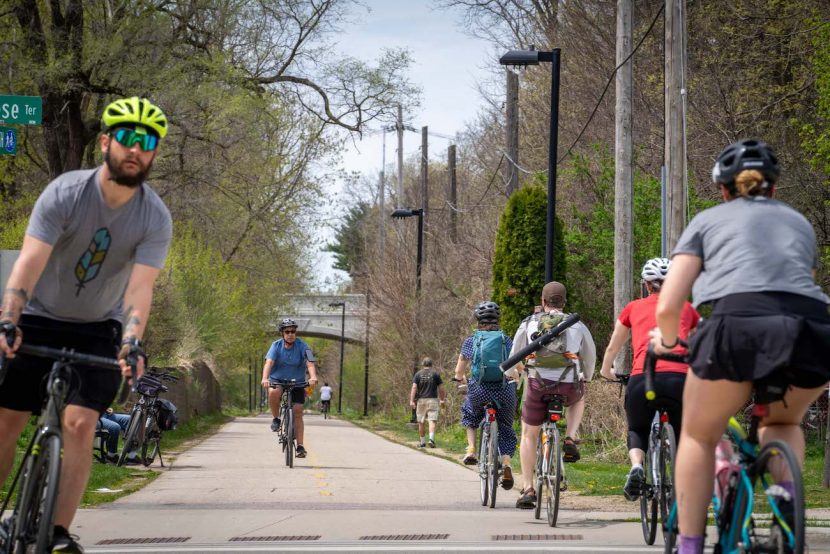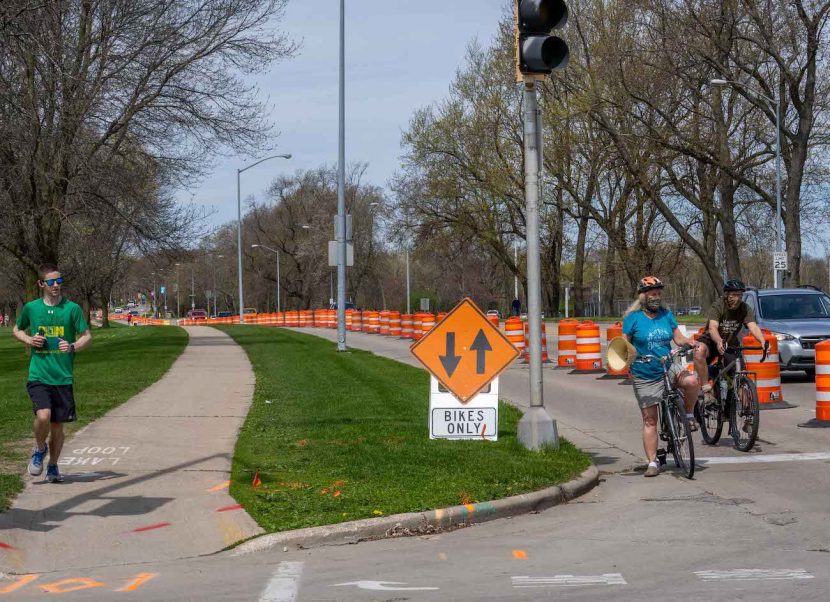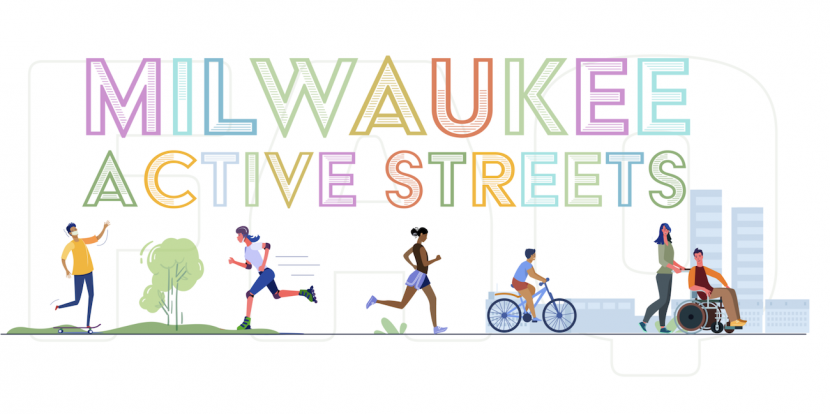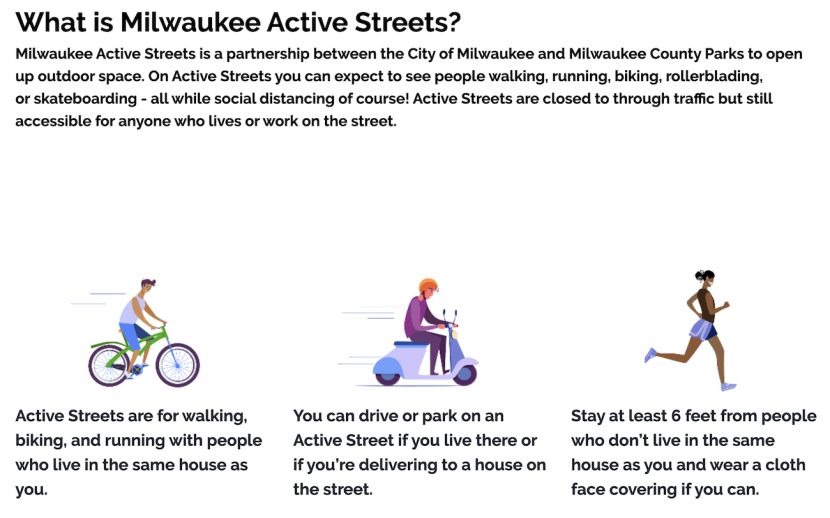
Streets to Trails
Repurposing underused streets for safe recreation.
As the temperatures warm, many residents are flocking to local trails and parks, but the bigger crowds have made it more difficult to use the 10 foot wide trails and maintain recommended social distances.
While Wisconsinites are asked to operate under Safer-At-Home orders, the ability to walk or bike in your neighborhood for physical and mental health is still allowed and encouraged. Proper social distancing is strongly recommended in order to reduce the possibility of spreading the coronavirus.
The trail counters in Milwaukee showed an 87% increase across all trails they track for March 29 to April 4th in 2020, compared to 2019. Madison trail numbers are also holding steady, or increasing, despite many students leaving for semester. Nationwide reports show trail usage is up 200% across the country.

Meanwhile, with so few people driving to work or for other trips, many of our roads are almost empty. Milwaukee County Vehicle Miles Traveled is down 76%. Dane County is down 79%. La Crosse County is down 73%.
Not all neighborhoods in our communities have parks and trails where people feel safe riding bicycles, skating and running. And because most sidewalks are only five feet wide, it can be difficult to keep safe social distances, even just going for a walk. For this reason, Madison, Milwaukee and other cities across the country are closing some local streets to through traffic for motor vehicles. With only residents who live on a block driving on them, these low-traffic streets become wide, safe places for people to get exercise and fresh air outdoors.
These temporary closures cost little more than the staff time to drop off some barricades at the end of the street. They also offer low-cost opportunities to test demand for safer streets.

The City of Madison was the first to try to provide less congested neighborhood routes for outdoor exercise in neighborhoods scattered around the city. They are also making improvements to quickly widen several sections of the Capital City Bike Path, the busiest trail in Madison, and probably the state.
Madison also decided to take advantage of the reduced traffic to test temporary two-way protected bike lanes along Atwood Avenue. Atwood is scheduled for reconstruction in 2024, and the 30% plans already include curb separated two-way paths from Oakridge Avenue to Dennent Drive. There is interest in extending that cross section further, so the City is testing the use with lanes created with construction barrels.

Both the City of Milwaukee and Milwaukee County are also making plans to create safer places for outdoor recreation to offer alternatives to extra crowded parks and trails. The Milwaukee County Parks Department will be closing some parkways down to motor vehicle through-traffic in areas of the County without easy access to the Oak Leaf Trail.
The City of Milwaukee Department of Public Works is also coordinating with members of the Milwaukee Common Council to close some local streets to through traffic. Those streets need to be approved by the Common Council yet, but you can see the preliminary plans on the nice new website they created. All residents, deliveries and emergency services will continue to have access to the streets, but the reduced number of cars will allow people to feel safe getting some outdoor exercise while keeping a safe distance from neighbors and friends.

You can see all the routes in Milwaukee on the handy Milwaukee Active Streets website they created together.
The Bike Fed thanks the over 500 of you who signed our petition, or reached out to their elected officials directly, to help make this happen. We also encourage our members to consider asking your elected officials to make these temporary changes to our safer streets permanent. Why shouldn’t we keep unnecessary through traffic off our neighborhood streets so we have safer places to live? Temporary barricades could be replaced by attractive planters and eventually permanent traffic calming features.
Perhaps something good, like a network of safe streets, can be a small positive legacy of this overwhelmingly terrible pandemic.